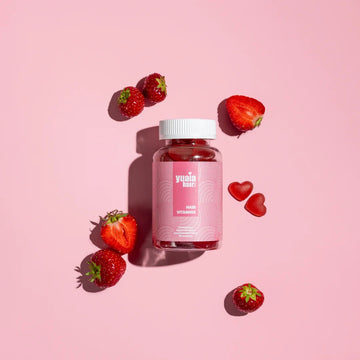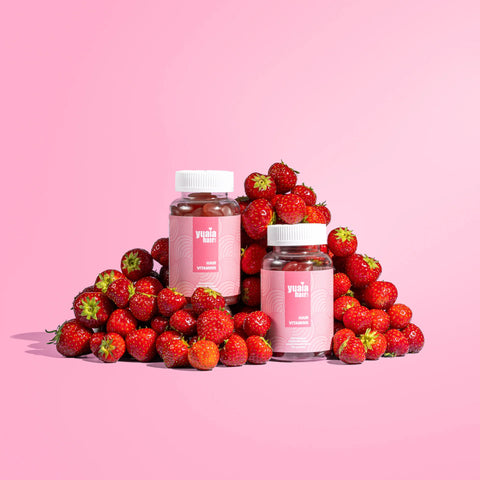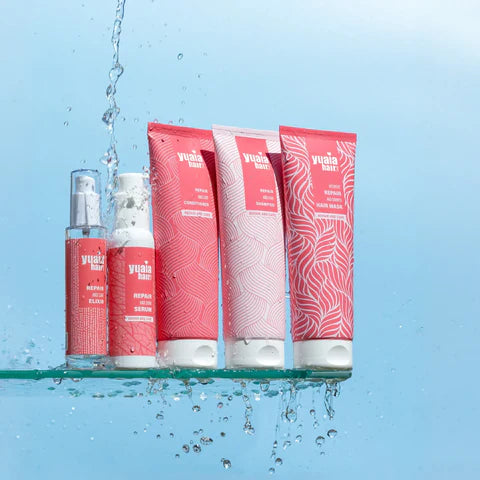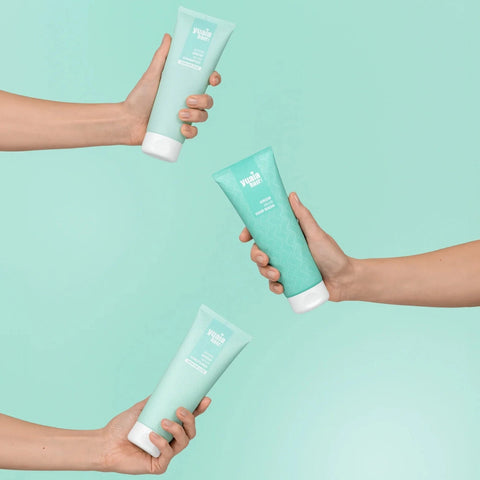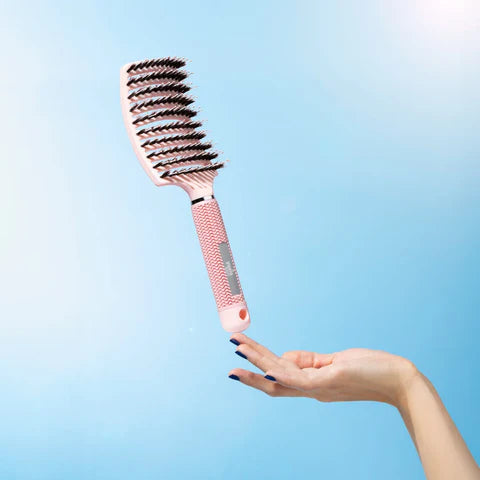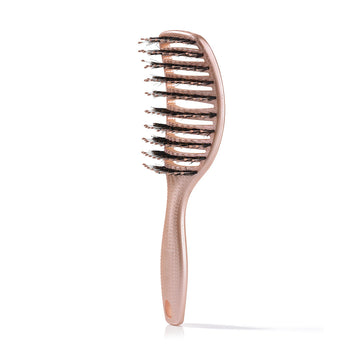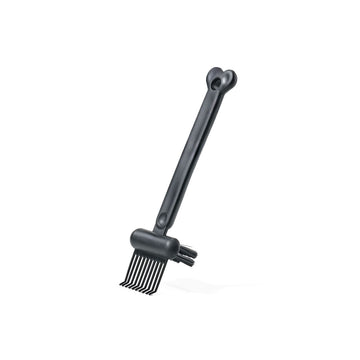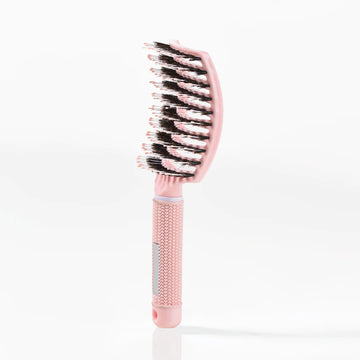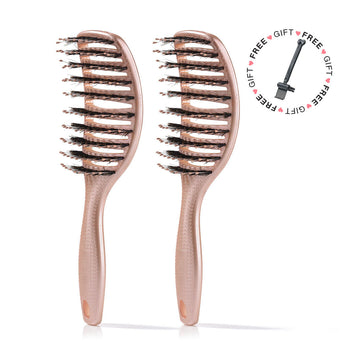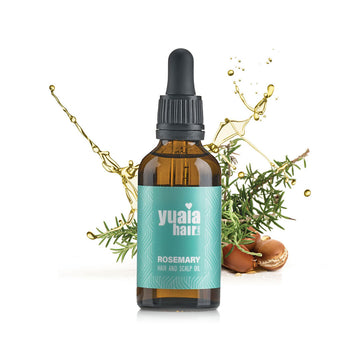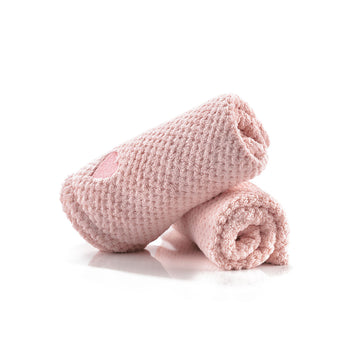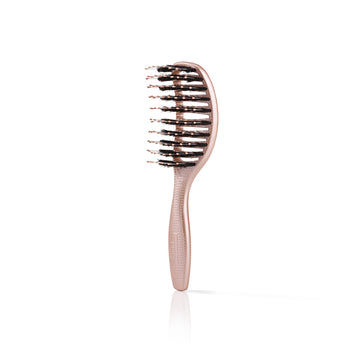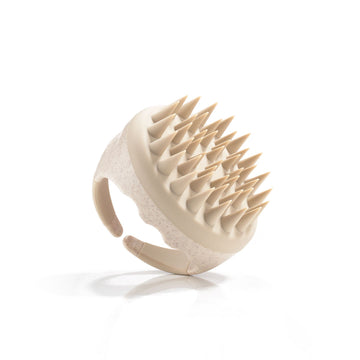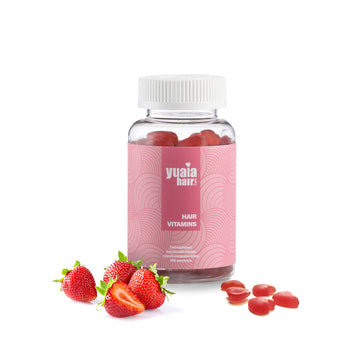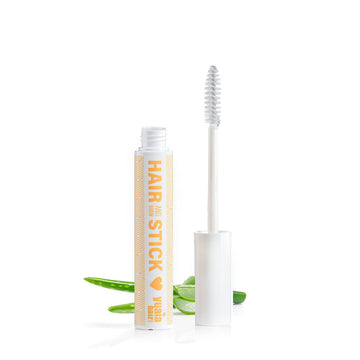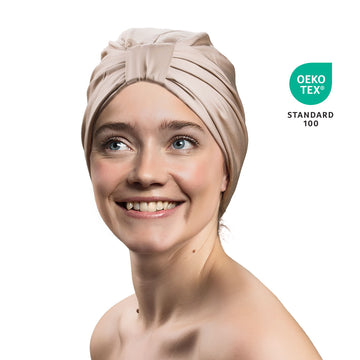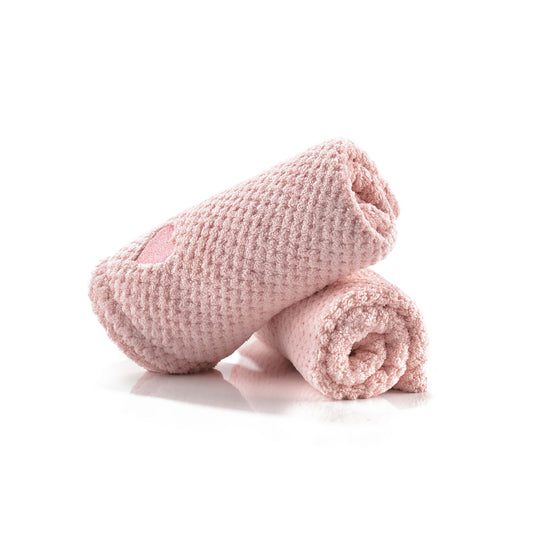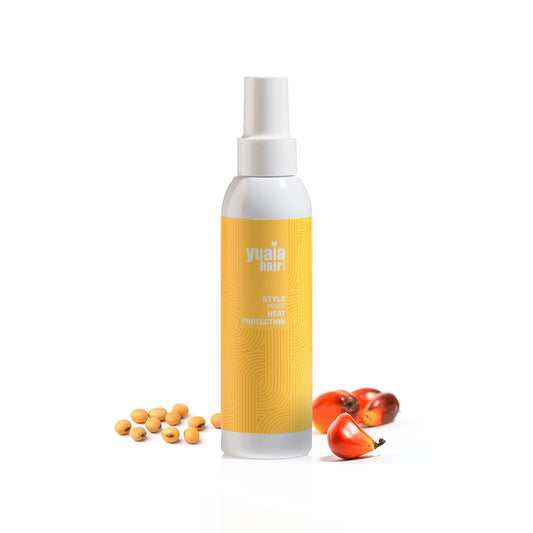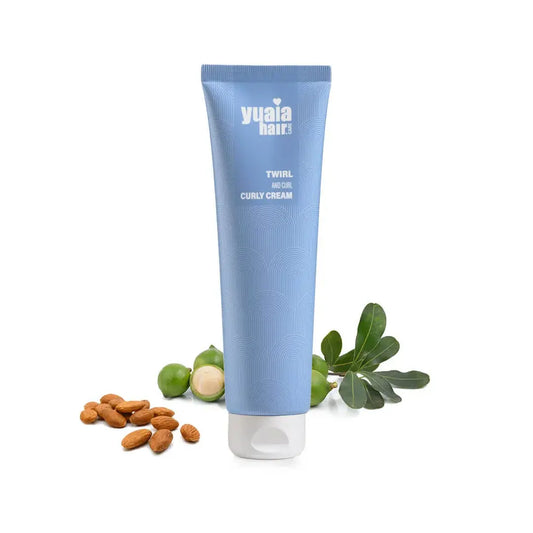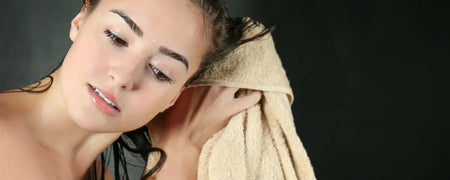
What you need to get started
To plop hair effectively, you'll need a few basic items:
-
A clean, soft cotton T-shirt or a microfiber towel.
-
Curl-friendly styling products such as leave-in conditioners, curl creams, or gels.
-
A wide-toothed comb or your fingers for detangling.
Step-by-step: How to plop hair
-
Wash and detangle: Start with freshly washed, conditioned, and gently detangled hair. Make sure your hair is damp, not dripping wet.
-
Apply styling products: Evenly distribute your preferred products—such as a leave-in conditioner, curl cream or gel—throughout your damp hair using fingers or a wide-toothed comb.
-
Lay out the fabric: Place a cotton T-shirt or microfiber towel on a flat surface (like a bed or chair) with the sleeves or narrow end facing you.
-
Flip your hair forward: Bend over and gently let your curls fall into the center of the fabric so they coil naturally at the crown.
-
Wrap and secure: Fold the bottom of the fabric over your head and bring the sides or sleeves around your neck. Tie or twist them securely.
-
Let it sit: Leave the wrap on for 20–45 minutes depending on your hair’s texture and thickness.
-
Unwrap and dry: Gently remove the wrap and either air dry or finish with a diffuser if needed.
Tips for different hair types
While plopping is a versatile technique, adjusting it to suit your specific hair type can make a significant difference in the final result. Factors like density, texture, length, and curl pattern all influence how long to plop, what products to use, and how to wrap the hair most effectively.
Fine or thin hair
For fine hair or thin hair, it's important to avoid heavy products such as thick butters or rich gels, as they may weigh the hair down and reduce natural volume. Instead, opt for lightweight leave-in conditioners and minimal hold styling creams. Additionally, shorten the wrapping time to around 15–20 minutes to avoid flattening the roots and ensure the curls stay bouncy and lifted.
Thick, coarse, or high-density curls
For thick, coarse, or high-density curls, heavier styling products such as curl creams, butters, or defining gels can help lock in moisture and maintain curl clumping. These hair types often benefit from plopping for 30–45 minutes or even longer, depending on moisture retention and desired definition. The added time helps the curls set in a more defined shape while removing excess water gradually without frizzing the strands.
Short hair
If your hair is short, adjusting the fabric size can significantly affect your comfort and results. A smaller T-shirt or towel will make it easier to wrap and secure the hair close to the scalp, ensuring that shorter lengths are lifted and supported during the drying process. It's also helpful to place the hair at the crown of the head to encourage volume and uniform curl direction.
Wavy hair
Wavy hair types can benefit from slightly looser plopping techniques that avoid excessive scrunching, allowing the waves to form naturally. For those with layered cuts or mixed curl patterns, experimenting with fabric tension and plopping duration can make a noticeable difference in the final look.
Avoid these common plopping mistakes
While plopping is a gentle and effective technique, there are a few pitfalls that can hinder your results. Knowing what to avoid can help you make the most of your routine and keep your curls looking their best.
Using the wrong towel
Using terrycloth towels can lead to frizz due to rough fibers that disturb the hair cuticle and break up curl formation. These fibers are often too abrasive for the delicate structure of curls, causing unnecessary damage and disrupting the natural coil pattern. The result is often hair that appears more puffy, undefined, and difficult to style. This is especially problematic for those with fine or porous hair, where even minimal friction can lead to excessive frizz and breakage.
It's important to opt for smoother materials like microfiber or cotton T-shirts, which minimize friction and help retain the natural structure of the curls. Microfiber towels, in particular, are highly absorbent while remaining gentle on the strands, making them a popular choice in curly hair care routines. Cotton T-shirts are a widely accessible alternative that offers similar benefits. Both fabrics help encourage curl clumping and reduce the disruption that often occurs during the drying phase.
Overusing styling products
verloading your hair with product can cause buildup, weighing down the hair and making curls appear limp and greasy instead of bouncy and defined. Stick to a balanced amount of styling products that suit your specific hair type and porosity to avoid this issue.
Plopping for too long
Avoid plopping for too long, as excessive time wrapped up can lead to flattened roots, reduced volume, and uneven drying—especially at the crown or nape of the neck. For best results, monitor how your hair behaves with different durations and make small adjustments.
Tying the fabric too tightly
It's also a good idea to avoid tightly tying the fabric, which may create pressure points and indentations in the curl pattern. The goal is to support the curls, not compress them.
General awareness
In general, listening to your hair and observing how it reacts can help you fine-tune the technique and avoid these common mistakes effectively.
Incorporating plopping into your routine
Plopping works best when used consistently as part of your wash-day routine. Pair it with a sulfate-free shampoo and nourishing conditioner to lay the foundation for healthy curls. Over time, this technique can become a reliable step in maintaining defined, frizz-free hair without relying on heat tools.
Using plopping for curl definition
Hair plopping is a simple yet highly effective method for improving the look and feel of natural curls. With just a few tools and a little practice, this technique can yield professional-looking results from the comfort of home. It's also an ideal technique for those searching for effective methods on how to dry curly hair without compromising the integrity of their curl pattern or using damaging heat tools.
Frequently Asked Questions
What is the best fabric to use for hair plopping?
The best fabrics for hair plopping are soft cotton T-shirts or microfiber towels. These materials minimize friction, reduce frizz, and help maintain the natural curl pattern, unlike traditional terrycloth towels which can cause breakage and disrupt curls.
How long should you plop your hair?
The ideal plopping time varies by hair type, but generally ranges from 15 to 45 minutes. Fine or thin hair benefits from shorter plopping times (15–20 minutes), while thick or coarse curls may need up to 45 minutes for best results.
Can you sleep with your hair plopped overnight?
While some people do sleep with their hair plopped, it is generally not recommended as it can flatten curls and cause uneven drying. For most, plopping for up to 45 minutes before air drying or diffusing is sufficient.
Do you need to use styling products before plopping?
Yes, applying curl-friendly styling products such as leave-in conditioner, curl cream, or gel to damp hair before plopping helps enhance definition, reduce frizz, and lock in moisture for longer-lasting curls.
Is hair plopping suitable for all curl types?
Hair plopping is suitable for most wavy and curly hair types. Adjust the technique and duration based on your hair’s density, length, and curl pattern to achieve the best results.
 2-5 day delivery
2-5 day delivery
 25.000+ satisfied customers
25.000+ satisfied customers
 Satisfaction Guarantee
Satisfaction Guarantee

